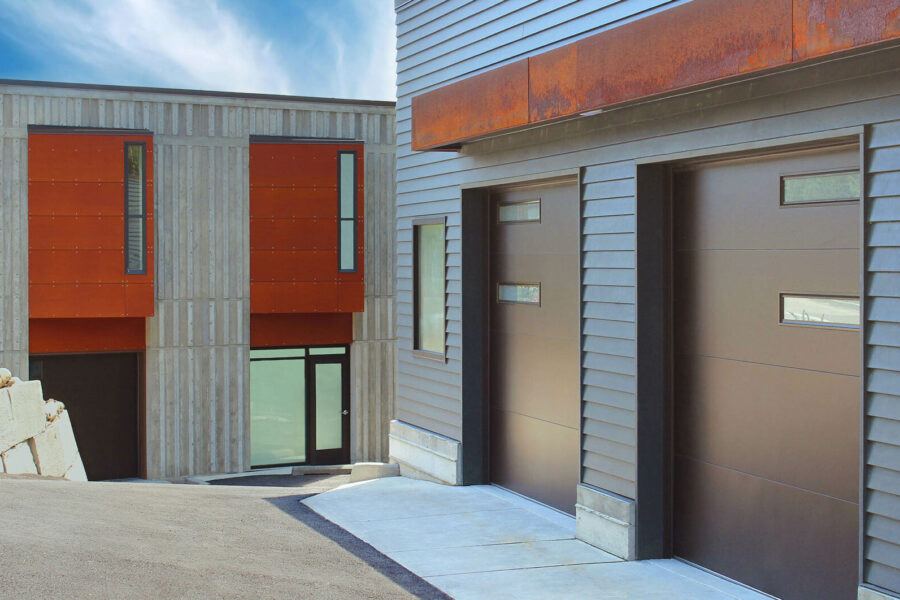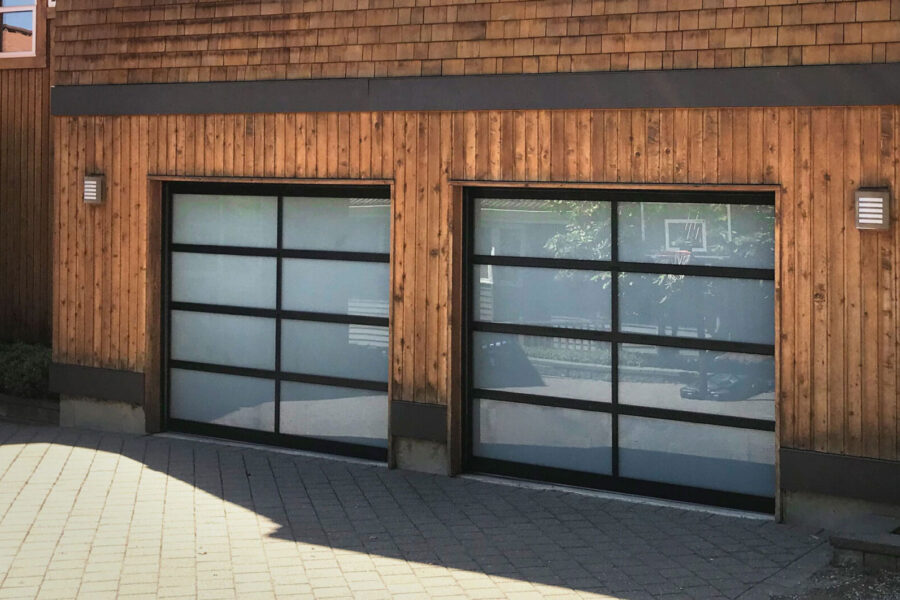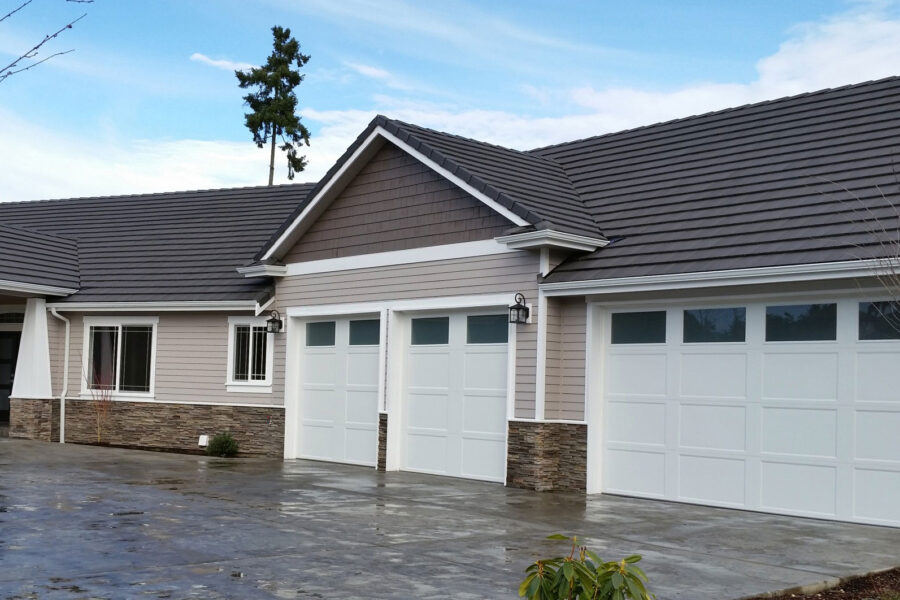Story at a glance:
- A garage door’s energy efficiency and curb appeal are most relevant when the door is closed.
- Modern homes and garages require better temperature control, placing greater pressure on door manufacturers to increase thermal performance.
- Aesthetics are critical to home values, and generic, boring garage doors are a missed opportunity.
The topic of residential garage doors can be fraught, even contentious at times. So much has been written, discussed, and debated regarding the aesthetics and visual dominance of garage doors that whole zoning board meetings have been upended by the pros and cons on the subject.
After that is all settled, there are very real functional matters where it comes to residential garage doors. Springs break, tracks can be misaligned, rollers and hinges wear out. Temperature control in garages, once discounted, is increasingly valued by homeowners. And as the parent of any teenage driver will attest, it is quite possible to damage door panels with a car that is inexpertly parked.
Since street-facing garage doors are a norm on modern home designs, they are now front and center in the matter of curb appeal. Anyone planning to sell their home in the foreseeable future has to consider whether the garage doors will add or subtract from its perceived value.
Aesthetics, Safety, and More

Photo courtesy of Hörmann Group North America
The engineers at Hörmann Innovative Door Systems are well acquainted with these issues. Their emphasis is on offering options that meet the needs and aspirations of designers and residential users while providing a functional and low-maintenance product. And those needs continue to evolve.
For example, garage doors from all makers are subject to wear-and-tear. It’s a function of moving parts and the vagaries of home use; the vast majority of people using or otherwise in contact with their doors are by definition non-professionals. Not only do the doors need to be safe, but they have to withstand human error.
“With our German-based parent company we get a lot of knowledge and know-how,” says Zach Buckner, the company’s director of marketing. “European standards are higher for both safety and environmental performance.”
With safety as a priority Buckner explains that brackets, photo sensors, and pinch-proof designs make it very unlikely that injuries can happen with the company’s products. Hörmann’s national network of installers further backs that up, ensuring product design is supported by expert installation. “We have 1,200 dealers and installers in our network,” he says. “We can honor the warranties on all parts and install them properly with this network of local experts.”
Having that local focus substantiates an expertise that is region- and climate-specific. The weather conditions imposed on a garage door in New England differ from those in the American Southwest. And with increasing attention to temperature-controlled garages, features of many Hörmann doors help protect vehicles and anything else inside the garage from the deteriorating effects of temperature extremes.
Temperature Control

Photo courtesy of Hörmann Group North America
Why is temperature control important? One reason is the DIY mechanic is alive and well, with motorists who at the very least like to clean their cars if not check the carburetor and fluid lines. Garages have many uses beyond cars and trucks, of course, be it for crafting and constructing, storage of athletic and lawn care equipment, and a place for peace and quiet. Very high summer temperatures or very cold conditions in winter get in the way of that.
This is why many homeowners now connect the HVAC system to the garage and insulate the walls. But if the door is not insulated, energy and money is wasted. Hörmann garage doors are made with polyurethane and polystyrene materials that achieve high U-factor that, unlike R-values (measuring insulation of single materials only), are calculated based on the entire door mechanism. This includes panels, frames, hardware, and seals. DASMA (Door and Access System Manufacturers Association), recently launched a program to officially help the door industry transition to the exclusive use of U-factor instead of R-value because U-factor is a more accurate measurement of thermal efficiency.
First Impressions

Photo courtesy of Hörmann Group North America
What’s clear from watching home shows and perusing home and garden websites is that garage doors are very important to the property aesthetics. The size and placement of a garage door is also a hot topic in zoning board meetings.
This is in part because of the sheer proportion of two-car and larger garages relative to the full facade of a house. The absence of alleys and relatively narrow home lots forces garages to be in the front of a property—what’s noticed first with home buyers. This curb appeal factor places a good amount of pressure on the door being aesthetically attractive.
Garage door replacements rank highest among 22 remodeling projects examined by Remodeling Magazine’s annual cost versus value report in 2022. The average garage door replacement cost ($4,041) returned 93.3% on the investment ($3,769), as measured in 150 US markets. The study is shared by DASMA.
“Garage doors are a big part of the face of a house,” Buckner says. “It needs to match the look of the structure, whether it’s a contemporary style, something traditional, or even a log cabin.”
Garage doors are a big part of the face of a house.
Hörmann currently promotes 13 distinct styles, ranging from wood carriage house doors to modern glazed aluminum. Buckner says they identify trends in part by listening to what salespeople are hearing in the field, paying attention to manufacturers of other exterior building materials, and observing color trends. “When considering new colors we work with steel manufacturers to test colors—a process that can take between three and four months,” he says.
Because the company has garage doors across the country, it has the opportunity to identify trends in one region—California, for example—and introduce them elsewhere, like on the East Coast and in the Midwest. “We’re seeing more interest in new colors and finishes like rust, concrete, and gray woodgrain.”
Zoning boards and architecture critics might not love the visual dominance of garage doors, but Hörmann’s design-forward approach is changing that conversation, with exciting, aesthetic, sustainable possibilities across projects.

